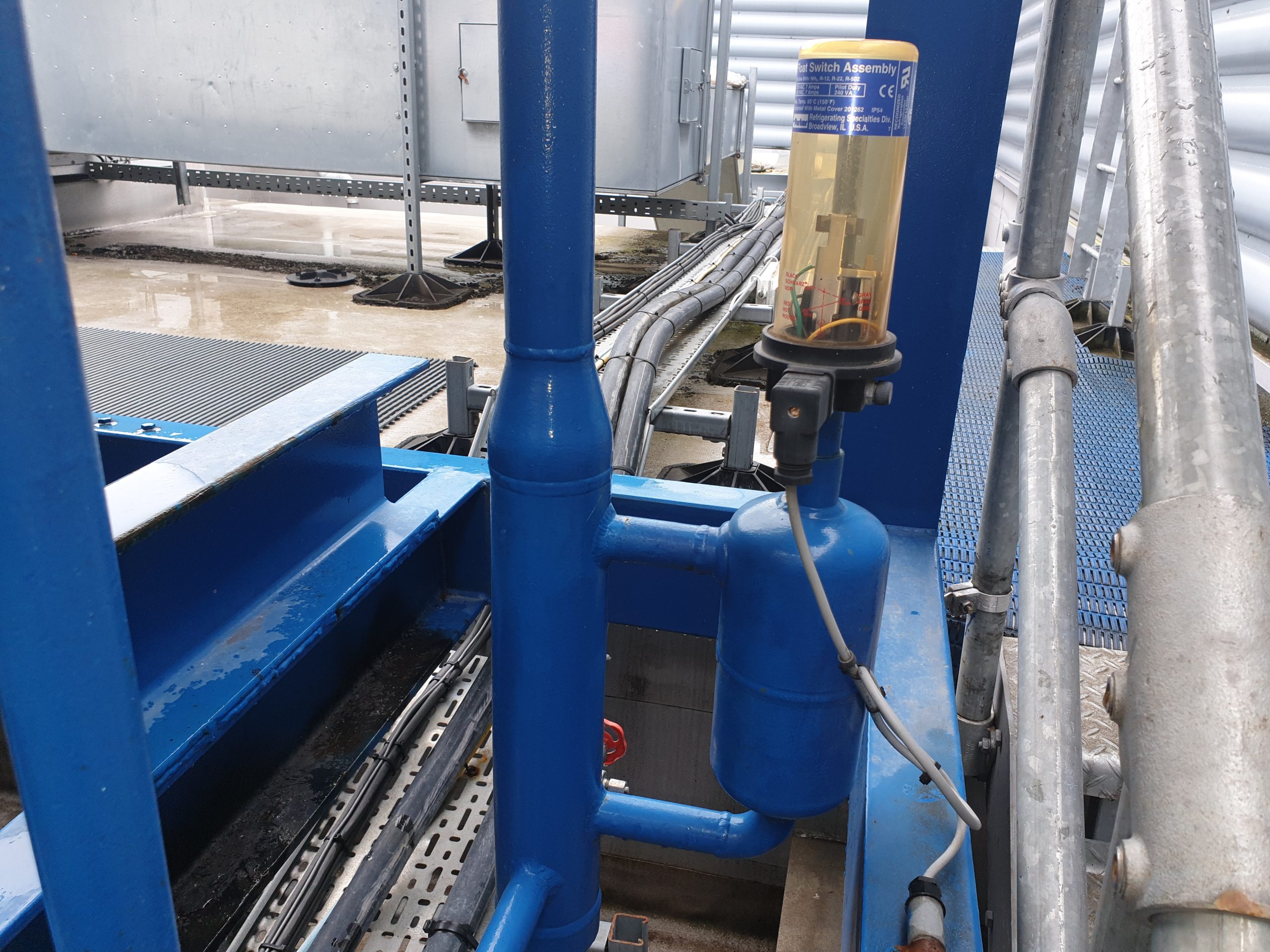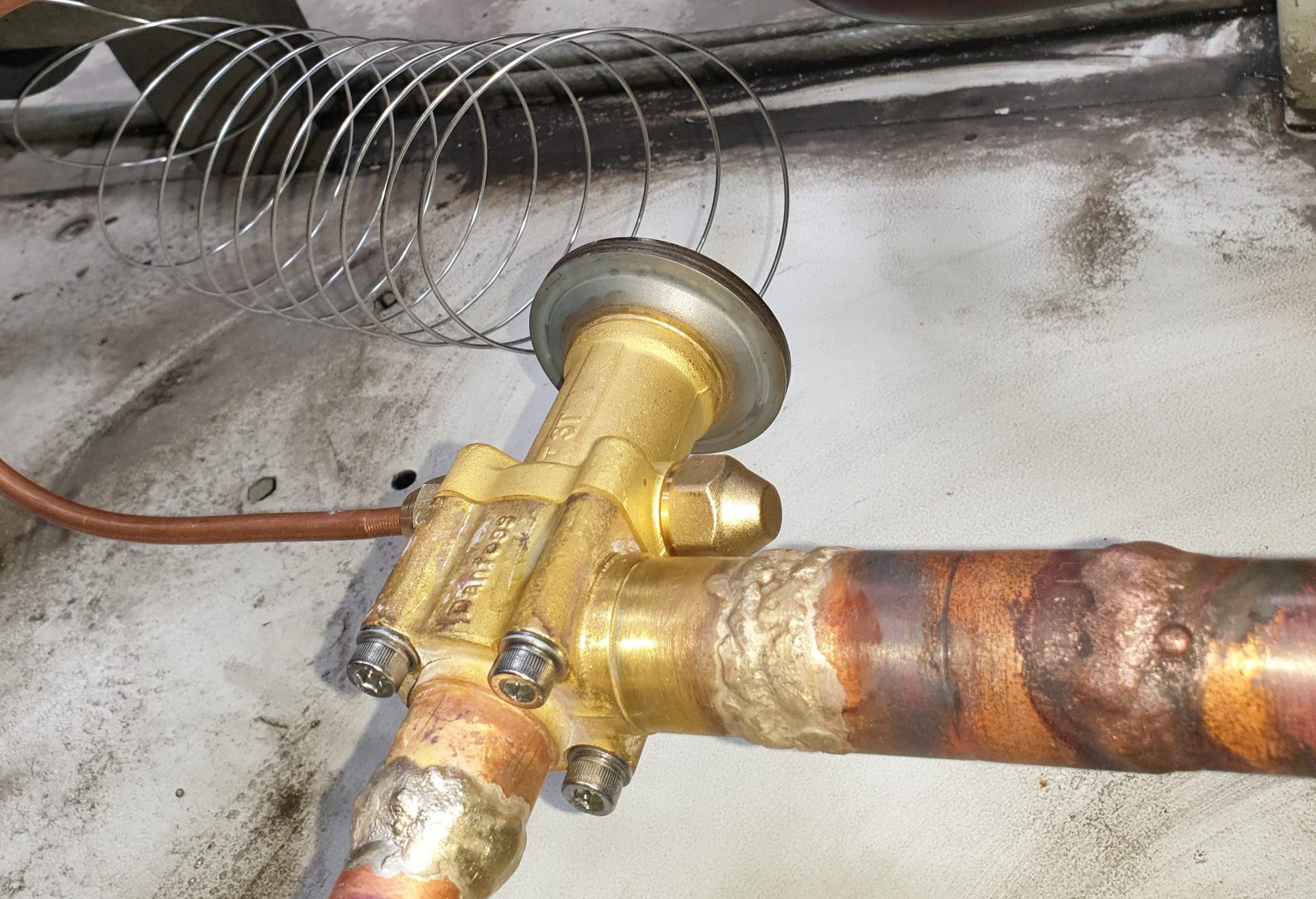In this article we are going to explore: how do chillers work- expansion valves. They are also referred to as a metering device, as they control the flow of refrigerant into the evaporator. Read below for an insight into the 4 main types that are used on chillers…
How do Chillers Work - Electronic Expansion Valves
This is a refrigerant control which uses a mechanical valve operated by a step motor. A step motor opens the valve according to the number of steps in between the closed and the open positions. This step motor is controlled by a program in the chiller controller…
On Board Comparator
Every engineer has a comparator app on his phone and a set of comparator sliders in his tool case. The controller has sensors fitted to the evaporator and an in built comparator for the refrigerant which runs through the system. The comparator is a scale which compares the pressure of the refrigerant to the corresponding saturation point. Saturation point is another way of describing the boiling point of the liquid refrigerant.
Superheat
The above algorithm is needed to decide the position of the step motor. A pre programmed amount of superheat (the temperature above saturation) is programmed into the controller. This prevents compressor failure due to liquid refrigerant slug back.
Efficiency
Because the above is controlled by a step motor and a microprocessor, the superheat is closely controlled to as low as 1°C. A low superheat value is one of the factors which contributes to a machine running more efficiently.
0161 237 3727
service@maximuschillers.com
How do Chillers Work - Solenoid Expansion Valves
This is a very simple expansion valve. It is just a solenoid valve fitted into the liquid line which is operated by a solenoid coil. The control of this valve is very similar to the above. The difference is that the program works out how long to keep the valve open and how long to keep it shut.

How do Chillers Work - High Side Float Expansion Valves
The photo shows this type of valve as used on an ammonia chiller. This kind of chiller is a flooded system where all of the refrigerant is stored in its liquid phase on the low side of the system. As load increases: more refrigerant boils off in the evaporator- it is sucked into the compressor- discharged into the condenser and then arrives as a liquid at the float valve. When the chamber in this valve fills, it lifts a float inside which is made of steel. The float operates a switch which sends volts to the liquid pipe solenoid valve. When this valve opens, it lets the liquid in the float chamber to pass into the evaporator. Having done this, the float drops back down and the valve closes again. The closing of the valve maintains the pressure difference between the high side and the low side of the system.
0161 237 3727
service@maximuschillers.com
How do Chillers Work - Thermostatic Expansion Valves
There are 4 forces acting on a TEV: the power element v spring and liquid line pressure v suction pressure. The expansion valve has been designed to balance these forces.
Power Element
A bulb is fitted to the suction pipe near to the compressor. This bulb is charged with the same refrigerant that is running in the chiller system. It is connected to the power element using a capillary tube (photo at the top of the page) When the temperature rises in the evaporator, liquid refrigerant boils off in the bulb, this forces a diaphragm to open in the power element.
Spring
A needle located on the outside of this diaphragm pushes the spring down. This opens the expansion valve and lets more refrigerant through.
Liquid Line Pressure
The liquid line is the inlet to the expansion valve and carries the refrigerant arriving from the condenser.
Suction Pressure
The pressure drop on the far side of the expansion valve is maintained by the sucking action of the compressor.
Mass Flow Rate
The above allows for a high mass flow rate when the evaporator warms and a lower mass flow rate when the evaporator cools.
Liquid Line Solenoid Valve
To prevent refrigerant passing into the evaporator during off cycles, a liquid line solenoid valve is often used. This type of system usually pumps the evaporator down before the compressor stops. Shortly before the compressor starts back up again, the liquid line solenoid valve opens, the pressure increases in the evaporator and then the compressor starts.
Equalizing Line
This is usually a copper pipe which connects the expansion valve to the far side of the evaporator. It compensates for the pressure drop across the evaporator. It also detects the pressure of the suction pipe at the same location of the sensing bulb. This allows the TEV to accurately adjust the superheat.
Hot Gas Bypass
Some chillers, like laser chillers, require a very close control of setpoint. Sometimes the deadband can be as narrow as 0.2°C. If the compressor were to stop and start all the time to achieve this- it would fail very quickly. Therefore, a hot gas bypass can be used to allow the compressor to carry on running when the chiller achieves setpoint. A solenoid valve opens which allows the discharge hot gas to bypass the expansion valve and return to the suction. It can open and close as many times as needed to achieve a very close control, while at the same time allowing the compressor to run normally.
How do Chillers Work - Expansion Valve Flash Gas
This is the term that describes that portion of the liquid refrigerant which, in any expansion valve, instantly evaporates after it passes through. When this happens, the absorption of latent heat cools the remaining liquid refrigerant in the evaporator to the required saturation temperature.
Related Articles:
How Do Chillers Work
Chilled Water System EEV Service
Planned Preventative Chiller Maintenance
How do Chillers Work? Compressors
Process Chiller Repair Service
Hit the Tags below to navigate your way to our extensive library of further reading on this subject.
Read more about thermostatic expansion valves at the Danfoss website

